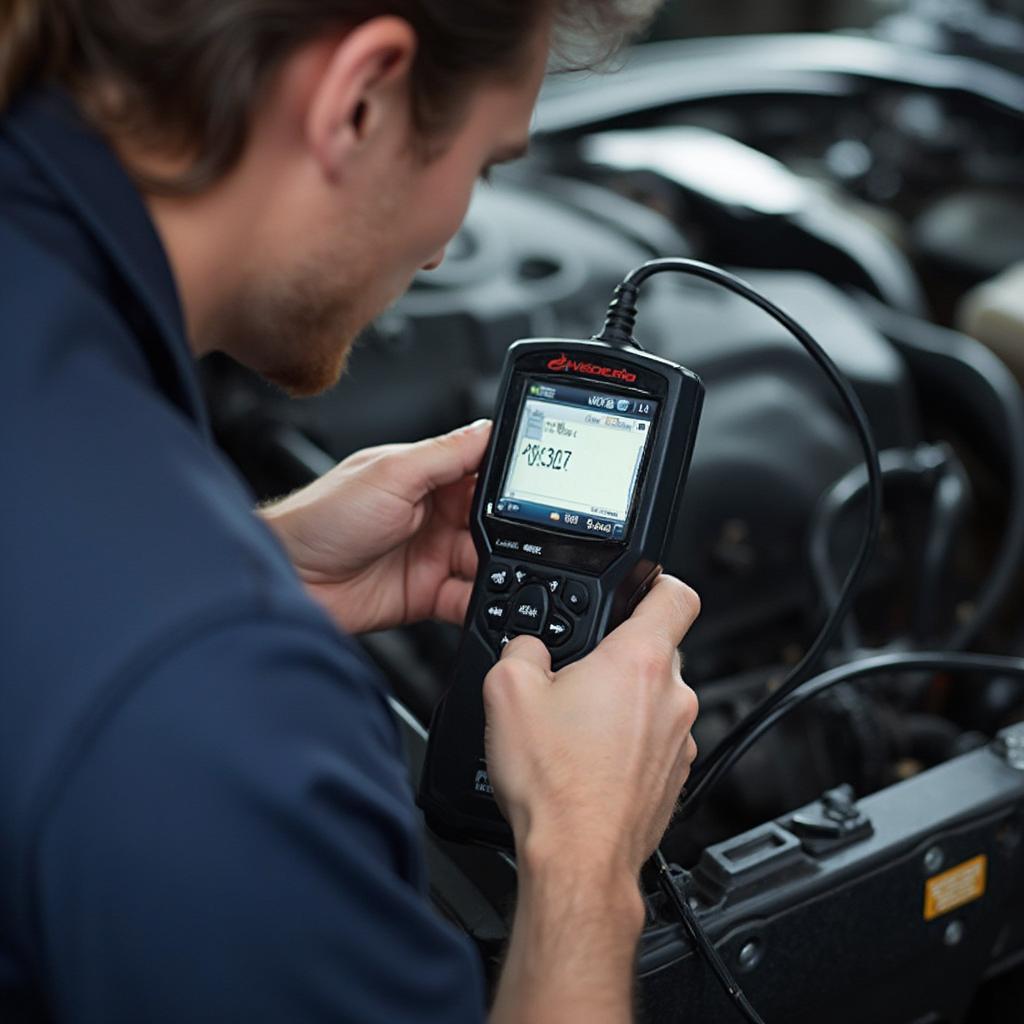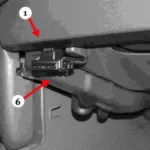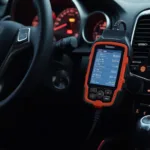The OBD2 code P0327, indicating “Knock Sensor 1 Circuit Low Input (Bank 1 or Single Sensor),” can be a real headache for car owners. This code signals a problem with the knock sensor’s ability to detect engine knocking, potentially leading to performance issues and even engine damage. This article will delve into the causes, symptoms, diagnostic procedures, and solutions for the P0327 code, equipping you with the knowledge to tackle this issue effectively.
What is OBD2 Code P0327?
The P0327 code specifically refers to a low input voltage from the knock sensor 1 circuit. Your car’s knock sensor acts like its ears, listening for the telltale pinging or knocking sounds that indicate pre-ignition or detonation. When the sensor detects these noises, it sends a signal to the engine control unit (ECU), which adjusts the timing to prevent damage. A low input signal means the ECU isn’t receiving the information it needs to protect your engine. The “Bank 1” designation refers to the side of the engine containing cylinder number one, while “Single Sensor” applies to vehicles with only one knock sensor.
Causes of OBD2 Code P0327
Several factors can contribute to a P0327 code. These include:
- Faulty Knock Sensor: The most common culprit is a malfunctioning knock sensor itself, often due to age, wear, or exposure to extreme temperatures.
- Wiring Problems: Damaged, corroded, or loose wiring in the knock sensor circuit can disrupt the signal transmission.
- Poor Electrical Connections: A bad ground connection or loose connector can also cause a low input voltage.
- Damaged ECU: In rare cases, a faulty ECU might be the root of the problem, although this is less common than other causes.
- Low Engine Oil or Incorrect Octane Fuel: Though not direct causes, these factors can contribute to excessive engine knocking, which might overwhelm the knock sensor and trigger the code.
Symptoms of OBD2 Code P0327
Recognizing the symptoms of a P0327 code is crucial for early diagnosis and preventing further damage. You might experience:
- Check Engine Light: The most obvious symptom is the illumination of the check engine light on your dashboard.
- Engine Knocking: You might hear a pinging or knocking sound coming from the engine, especially under load or acceleration.
- Reduced Engine Performance: The ECU might retard the timing to prevent damage, leading to decreased power and fuel efficiency.
- Hesitation or Stalling: In some cases, the engine might hesitate or stall, especially during acceleration.
- Rough Idle: The engine might idle roughly or unevenly.
Diagnosing OBD2 Code P0327
Diagnosing a P0327 code typically involves the following steps:
- Retrieve the Code: Use an OBD2 scanner to retrieve the stored trouble codes.
- Inspect the Wiring: Visually inspect the wiring and connectors in the knock sensor circuit for any damage, corrosion, or looseness.
- Test the Knock Sensor: Use a multimeter to test the knock sensor’s resistance and voltage output.
- Check the ECU: If the knock sensor and wiring are okay, test the ECU for any faults.
 Diagnosing OBD2 Code P0327 with a Scanner
Diagnosing OBD2 Code P0327 with a Scanner
How to Fix OBD2 Code P0327
Fixing the P0327 code depends on the underlying cause:
- Replace the Knock Sensor: If the sensor is faulty, replace it with a new one.
- Repair or Replace Wiring: Repair or replace any damaged, corroded, or loose wiring.
- Clean or Tighten Connections: Clean and tighten any loose or corroded connectors.
- Replace the ECU: In rare cases, the ECU might need replacement.
What Happens if You Don’t Fix P0327?
Ignoring a P0327 code can lead to severe engine damage. Continued engine knocking can damage pistons, cylinder walls, and other internal engine components. This can result in costly repairs or even require a complete engine rebuild.
“Addressing the P0327 code promptly is essential to prevent catastrophic engine failure,” says Robert Miller, a seasoned automotive engineer with over 20 years of experience. “A simple knock sensor replacement can often save thousands of dollars in potential repairs down the road.”
Conclusion
The OBD2 code P0327, signaling a low input from the knock sensor circuit, is a serious issue that requires immediate attention. Understanding the causes, symptoms, and diagnostic procedures can help you address this problem efficiently and prevent potentially costly engine damage. Remember, early diagnosis and repair are key to keeping your car running smoothly and preventing expensive repairs down the line. Addressing the obd2 code p0327 promptly is essential.
FAQ
- What does the P0327 code mean? It indicates a low input voltage from knock sensor 1.
- Can I drive with a P0327 code? While possible, it’s not recommended, as it can lead to engine damage.
- How much does it cost to fix a P0327 code? The cost varies depending on the cause but can range from a relatively inexpensive sensor replacement to a more costly ECU repair.
- How can I prevent a P0327 code? Regular maintenance, including using the correct octane fuel and ensuring adequate engine oil levels, can help prevent this code.
- Is the P0327 code serious? Yes, ignoring it can lead to severe engine damage.
- What tools do I need to diagnose a P0327 code? An OBD2 scanner and a multimeter are essential.
- Can I fix the P0327 code myself? Depending on your mechanical skills and the specific cause, you might be able to fix it yourself. However, consulting a qualified mechanic is always recommended for complex issues.
“Regularly scanning your vehicle with an OBD2 scanner can help detect potential issues like the P0327 code early on,” adds Sarah Johnson, a certified automotive technician. “Preventive maintenance is always the best approach.”
Need help with your OBD2 scanner or diagnosing car trouble? Contact us via WhatsApp: +1(641)206-8880, Email: [email protected] or visit us at 789 Elm Street, San Francisco, CA 94102, USA. Our 24/7 customer support team is always ready to assist.

